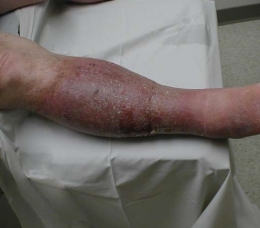Latest studies have shown that although treatment of varicose veins by EVLTS and HLS are equally safe and efficient, the risk of a relapse of the problem is higher when HLS is used. The research was carried out in Germany by scientists belonging to Saarland University Hospital. The study said that the number of adults affected by chronic venous insufficiency ranges from 28% to 35%. The problem is caused as a result of varicose veins. Prompt treatment is a way of curbing the advancement of the dermatological problem since long term repercussions can be complicated although not hazardous to health.

Varicose veins are caused due the inefficiency of vales in the blood vessels. Vales are provided in order to prevent the backward flow of blood through veins. As a person ages, the efficiency of these valves reduces and some amount of blood flows back into the veins, which causes them to swell. Veins appear blue and swollen as a result. This condition is seen in the legs, in most cases, especially in the upper thigh area. They are unsightly, which is why a lot of people request treatment.
The most common treatment of the disease is HLS. This process involves removal of the swollen vein, thus solving the problem. However, the rate of recurrence of the problem is high and can reach up to 40%. The second process, EVLT, is a process that uses a catheter that is inserted into the vein and it is ablated using laser beams. According to the authors of the study, there are not many researches that are carried on comparing the two types of treatments. Both the methods are endogenous.
The present study was carried on over a period of two years. Volunteers of the study were divided into two groups randomly and treated in two hospitals in Germany. Out of the total 346 volunteers, 185 were treated using EVLT and the remaining was subjected to HLS. The conditions of patients were followed up, considering a number of factors such as lifestyle, medicine effects, hemodynamic in veins and functioning of saphenofemoral vein before and after treatment. As per results, it was noticed that 23.1% participants who were treated with HLS developed the condition again while the recurrence rate for EVTL treatment was 16.2%. However, side effects were higher in EVLT treatment. Most of the remaining effects of both the treatments were similar. The satisfaction level among patients was also equal for both treatment procedures.